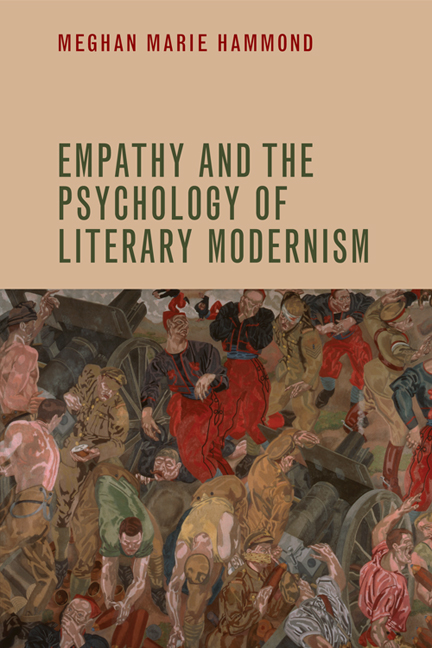Book contents
- Frontmatter
- Contents
- Acknowledgements
- Abbreviations
- Introduction: The Problem of Other Minds and the Fin de Siècle World
- 1 Into Other Minds: William and Henry James
- 2 Dorothy Richardson's Modernist Innovation
- 3 Communities of Feeling in Katherine Mansfield's Fiction
- 4 Empathy and Violence in the Works of Ford Madox Ford
- 5 Virginia Woolf and the Limits of Empathy
- Coda: New Structures of Fellow Feeling
- Bibliography
- Index
5 - Virginia Woolf and the Limits of Empathy
Published online by Cambridge University Press: 05 August 2016
- Frontmatter
- Contents
- Acknowledgements
- Abbreviations
- Introduction: The Problem of Other Minds and the Fin de Siècle World
- 1 Into Other Minds: William and Henry James
- 2 Dorothy Richardson's Modernist Innovation
- 3 Communities of Feeling in Katherine Mansfield's Fiction
- 4 Empathy and Violence in the Works of Ford Madox Ford
- 5 Virginia Woolf and the Limits of Empathy
- Coda: New Structures of Fellow Feeling
- Bibliography
- Index
Summary
A few years after the 1904 death of her father, Leslie Stephen, Virginia Woolf wrote about the devastation he suffered when her mother, Julia Stephen, died in 1895:
he was like one who, by failure of some stay, reels staggering blindly about the world, and fills it with his woe. But no words of mine can convey what he felt, or even the energy of the visible expression of it. (Woolf 1989: 47–8)
As Woolf paints her father here, in his terrible grief he is both open and closed to the world around him. His feelings flow out of his body, flooding his surroundings and subjecting his family to the kind of emotional infection that Max Scheler describes in The Nature of Sympathy. Yet his daughter cannot say what those feelings were like for him, inside his own mind. Her trouble here illustrates one of Stephen's own points in The Science of Ethics: despite our ability to read the bodily signs that express thoughts and feelings, we must always struggle to understand the inner goings-on of others, even those closest to us. Woolf wrote these words years before she published any fiction, but they presage her celebrated career, which is famously marked by efforts to convey what is felt with words.
Throughout this book, I have looked at modernist texts that seek to push the limits of sympathetic representation, producing experimental forms of empathic representation. I understand Woolf's novels to be an integral part of this empathic modernism, which is marked by effects of ‘feeling with’. There is perhaps no other English-language writer so closely associated with ‘getting inside’ fictional heads – and few so vocal about the need to break with past methods of representing interiority. She famously set herself against the Edwardian generation in ‘Mr Bennett and Mrs Brown’, charging Arnold Bennett and his peers with failing to create believable character minds. Still, as others have pointed out in recent years, we cannot look at Woolf only in terms of interiority. James Harker, for example, argues that for Woolf, ‘the modern literary experience derives from the nature of the faculties of perception, the tenuous points of connection between the inner and the outer worlds’ (Harker 2011: 2). Like Harker, I would ask that we turn our attention to the play between the inner and outer worlds in Woolf's work.
- Type
- Chapter
- Information
- Empathy and the Psychology of Literary Modernism , pp. 148 - 175Publisher: Edinburgh University PressPrint publication year: 2014



